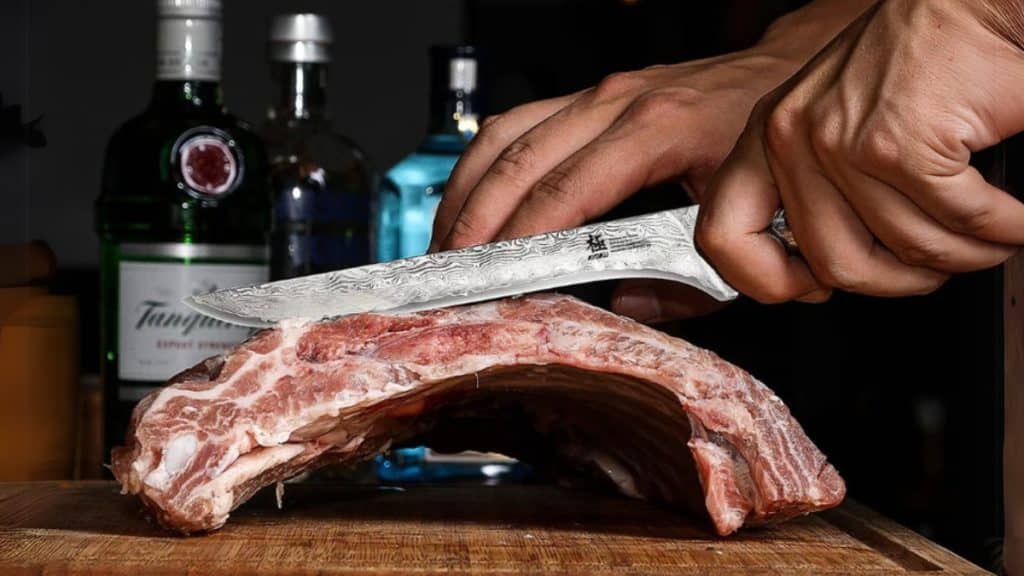Introduction
Japanese knives are renowned for their precision, sharpness, and craftsmanship. They are designed for specific cutting tasks, making food preparation more efficient and enjoyable. Whether you are a professional chef or a home cook, understanding how to use Japanese knives properly can elevate your culinary skills. This guide will walk you through different types of Japanese knives, proper handling techniques, and tips for maintenance and safety.
Understanding Different Types of Japanese Knives
Unlike Western knives, Japanese knives are often specialized for specific cutting tasks. Choosing the right knife for the job ensures clean, precise cuts and preserves the integrity of ingredients.
- Gyuto (Chef’s Knife) – A versatile all-purpose knife used for slicing, dicing, and chopping various ingredients.
- Honesuki (Japanese Boning Knife) – A stiff, triangular knife specifically designed for breaking down poultry and deboning meat. Unlike Western boning knives, the Honesuki has a more rigid structure, making it excellent for precise cuts around bones and joints.
- Santoku – A general-purpose knife with a shorter, wider blade, ideal for cutting vegetables, fish, and meat.
- Nakiri – Designed specifically for chopping vegetables, featuring a straight blade that allows full contact with the cutting board.
- Deba – A heavy, single-beveled knife used for filleting fish and cutting through small bones.
- Yanagiba – A long, thin blade used for slicing sashimi and sushi with precision.
- Chuka Bocho (Japanese Cleaver Knife) – A large, rectangular knife similar to a Chinese cleaver, used for chopping meat, vegetables, and even light-duty bone cutting. Despite its size, it offers precision and is widely used in Japanese-Chinese fusion cuisine.
If you’re looking for high-quality Japanese knives, Kyoku is an excellent brand to consider. Known for their impeccable craftsmanship, Kyoku knives blend traditional Japanese techniques with modern designs. Whether you’re looking for a versatile Gyuto, a precise Yanagiba, or a sturdy Deba, Kyoku offers a wide range of knives to suit different culinary needs.
Proper Knife Handling Techniques
Using Japanese knives correctly ensures safety and control while cutting. Here are key handling techniques:
- Grip the Knife Properly – Hold the knife with a firm but relaxed grip. Pinch the blade between your thumb and index finger while wrapping the rest of your fingers around the handle. This technique provides better control.
- Position Your Fingers Correctly – Use the “claw grip” by curling your fingertips under and guiding the knife with your knuckles. This prevents accidental cuts.
- Use a Push-Cut Motion – Unlike Western knives that use a rocking motion, Japanese knives work best with a forward and downward push-cut. This maximizes sharpness and precision.
Mastering these techniques helps you achieve professional-level precision in your food preparation.
Cutting Techniques for Precision
To get the best results from your Japanese knife, practice the following cutting techniques:
- Julienne and Chiffonade – For creating thin, uniform strips of vegetables and herbs.
- Slicing Fish & Meat – Use smooth, single strokes instead of sawing motions to maintain texture and presentation.
- Dicing and Chopping – With a Nakiri or Santoku, use a straight up-and-down motion to achieve even cuts.
These techniques help maintain the integrity of ingredients and enhance presentation.
Maintaining and Sharpening Your Japanese Knives
Japanese knives require proper care to maintain their sharpness and longevity. Here’s how to take care of them:
- Sharpening with a Whetstone – Use a whetstone with the correct grit level (1000-3000 for regular sharpening, 4000+ for polishing). Hold the knife at a 15-degree angle and use controlled strokes.
- Honing vs. Sharpening – Unlike Western knives, Japanese knives do not require frequent honing. Instead, sharpen them as needed with a whetstone.
- Cleaning and Storage – Hand wash your knives immediately after use, dry them thoroughly, and store them in a wooden sheath (saya) or on a magnetic strip to prevent damage.
Proper maintenance ensures your knives remain razor-sharp and ready for precise cutting.
Tips for Safe and Efficient Food Preparation
- Use the Right Cutting Board – Opt for wood or soft plastic boards to protect the blade’s sharp edge. Avoid glass or stone surfaces.
- Avoid Twisting the Knife – When cutting through ingredients, never twist the knife, as it can damage the blade.
- Prevent Food from Sticking – Lightly wet the blade or use a swift flicking motion to prevent food from clinging to the knife.
By following these tips, you’ll ensure a smoother and safer food preparation process.
Conclusion
Japanese knives offer precision, efficiency, and elegance in food preparation. By choosing the right knife, mastering proper cutting techniques, and maintaining the blade’s sharpness, you can significantly enhance your cooking experience. Start practicing with your Japanese knife today and elevate your culinary skills to the next level!

